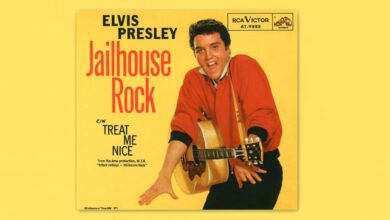Fascisterne: Understanding the Past and Present of Fascist Ideology

Few political words carry as much weight as fascisterne—the Danish term for “the fascists.” Although the word itself may sound old-fashioned, connected to black-and-white photographs from the 1930s, its power has hardly faded. Across Europe, academic circles, activist networks, journalists, and online communities still use the word to talk about history, to warn about modern extremism, and to frame political debates about democracy’s fragility.
But to understand why fascisterne still matters, one must go beyond slogans and the casual online use of the term. The word represents a historical reality, an ideological tradition, and a metaphor for what happens when democratic systems collapse. In today’s world of polarization and disinformation, it is also a lens through which societies examine the rise of ultra-nationalist movements and authoritarian tendencies.
This long-form article explores the full evolution of fascisterne: from the original fascist movements of the early 20th century to the ideological markers that define fascism, and finally to the ways modern Europe uses the term to understand new political threats.
The Birth of “Fascisterne”: A Historical Foundation
To understand the term fascisterne, we must first look at its origins in fascism, a movement that emerged in the aftermath of World War I. Europe in the 1910s and 1920s was traumatized—economically devastated, politically divided, and fearful of communist revolutions. In this vacuum, certain leaders offered a seductive promise: order, national pride, unity, and strength.
Benito Mussolini, the former socialist-turned-nationalist revolutionary, founded the Italian Fascist movement in 1919. The name came from the fasces, an ancient Roman symbol of bundled rods around an axe—interpreted by Mussolini as unity under strength. The early fascists capitalized on frustration, unemployment, and humiliation after war. They broke strikes, intimidated political opponents, and marched through streets in black uniforms, projecting discipline and force.
By 1922, Mussolini rose to power with the dramatic March on Rome, turning Italy into the first fascist state. The fascists dissolved democratic institutions, censored newspapers, banned opposition parties, and built a one-party totalitarian state centered around the Duce’s authority.
In Germany, Adolf Hitler and the Nazi movement took fascist principles to an even more extreme form. Whereas Italian fascism emphasized national unity and imperial revival, Nazism fused ultranationalism with biological racism and antisemitism, turning entire groups of people into enemies to eliminate.
In Denmark and other Nordic countries, fascisterne referred both to the Italian and German movements and to their smaller local imitators. During WWII, Danish Nazis and collaborators supported the German occupation, shaping the way the word has been used in Scandinavian memory ever since.
What Ideology Defines “Fascisterne”?
Although the world often uses “fascist” as a generic insult, the historical fascists shared a consistent ideological core. This ideology, which survives in various forms today, includes several defining elements:
a) Ultranationalism
Fascisterne view the nation not simply as a geographic entity but as an organic, sacred community. Loyalty must be absolute. Minorities, foreigners, or dissenters are often portrayed as threats to national purity.
b) Authoritarian Leadership
Fascist movements rally around a strong leader, believed to embody the will of the nation. Democracy is seen as weak, chaotic, and unfit for “great nations.”
c) Militarism and Glorification of Violence
Violence is not merely tolerated—it is celebrated. Fascisterne romanticize war, discipline, and sacrifice. Uniforms, parades, and paramilitary groups express this cultural militarization.
d) Anti-Liberal, Anti-Democratic Hostility
Pluralism, free press, independent courts, and parliamentary debate are viewed as obstacles. Fascism seeks total unity, which can only be achieved when dissent is crushed.
e) Scapegoating and Dehumanization
Traditional fascists used Jews, socialists, Roma people, and others as scapegoats. Modern extremists may target immigrants, Muslims, LGBTQ+ communities, or other minorities—following the same logic of “purifying the nation.”
f) State Control of Culture & Identity
Fascisterne seek to shape language, art, education, and media to reflect the regime’s worldview. They cultivate myths: a glorious past, a golden future, and an existential enemy.
These ideological pillars created regimes capable of censorship, political persecution, war crimes, and genocide. But they also created a blueprint used by far-right groups even after WWII—making the term fascisterne relevant long after the original sinners fell.
The Danish Perspective: “Fascisterne” in National Debate
In Denmark, the term fascisterne carries a particularly sharp historical sting. During WWII, Denmark experienced a complex mixture of cooperation, occupation, resistance, and collaboration. Danish Nazi groups, although never large, played a visible role in supporting the German presence. After the war, this episode became part of national memory, shaping public sensitivity to extremism.
a) Fascists During Occupation
Danish fascists—members of DNSAP (Danmarks Nationalsocialistiske Arbejderparti) and other smaller groups—actively cooperated with the German occupiers. They supported antisemitic policies, assisted in raids, and joined German-led police units. This history influenced how Danes used the term fascisterne for decades: not just as a political label, but as a reminder of betrayal.
b) Post-War Use in Danish Politics
In the post-war decades, the word was primarily used in historical analysis, education, and anti-fascist activism. As immigration debates intensified in later years, the term resurfaced—sometimes as a rhetorical weapon, sometimes as a warning.
c) Contemporary Danish Extremism
Although Denmark does not have major fascist movements today, small neo-Nazi groups, extremist networks, and online communities maintain fascist symbols and narratives. Anti-fascist groups continue to use fascisterne in campaigns against far-right rallies or hate speech, echoing European trends.
The Danish context shows how the word carries historical weight—something more than just description. It is tied to memory, moral judgment, and national identity.
After WWII: Did “Fascisterne” Disappear?
The military defeat of fascist regimes did not eliminate fascist ideology. Instead, it went underground, resurfacing repeatedly over the next decades in new shapes:
Neo-Fascism (1940s–1970s)
In Italy, Spain, Portugal, and parts of Latin America, authoritarian regimes maintained fascist-like structures. Neo-fascist groups preserved symbols, paramilitary culture, and ultranationalism.
Skinhead and Neo-Nazi Movements (1980s–1990s)
Hate groups across Europe used fascist imagery and targeted minorities with violence. Iconic fascist symbols, slogans, and propaganda styles were revived.
Online Fascism and Meme Culture (2000s–present)
With the internet, extremist groups found new strategies:
-
anonymous forums
-
recruitment through ironic or satirical memes
-
coded language
-
misinformation campaigns
Modern extremists often avoid explicit fascist labels but adopt many fascist ideas—making the term fascisterne both harder to apply and more widely used.
The 21st Century: Why the Word “Fascisterne” Returned to Public Debate
In recent years, fascisterne has re-entered mainstream political vocabulary. But why?
a) Rise of Far-Right Parties in Europe
Many parties emphasize:
-
anti-immigration platforms
-
defense of “traditional values”
-
skepticism toward democratic institutions
-
admiration for strong leaders
Some are legitimate conservative parties; others have clear roots in fascist or neo-fascist movements. Analysts differ, but the ideological overlap is significant enough that the term fascisterne reappears in commentary.
b) Populism and Democratic Backsliding
Countries such as Hungary, Poland, and sometimes Italy face accusations of undermining judicial independence, restricting press freedom, and centralizing power. These dynamics resemble earlier authoritarian methods—sparking comparison to fascist historical patterns.
c) Social Media Radicalization
Online echo chambers amplify extremist nationalism. Groups use:
-
nostalgia for imagined “better times”
-
fear of cultural replacement
-
conspiratorial thinking
-
demonization of opponents
This environment allows fascist-style worldviews to thrive without the explicit branding.
d) Global Tension and Identity Politics
Migration waves, economic inequality, wars, and cultural anxiety create fertile ground for scapegoating. Fascist logic thrives in such uncertainty, even if people reject the label.
For these reasons, fascisterne is now a term applied not only to historical figures but to modern movements and behaviors that echo the authoritarianism and hatred of the past.
Fascisterne as a Warning: Why the Concept Still Matters
Understanding fascisterne is not merely academic. It is essential for recognizing patterns that threaten democratic societies today. History teaches that fascism rarely announces itself clearly. It grows through:
-
acceptance of small abuses of power
-
tolerance of hate speech
-
normalization of violence
-
erosion of press freedom
-
attacks on institutions
-
division of society into “us” vs. “them”
Fascism does not begin with dictators—it begins with fear, apathy, and anger. The historical fascisterne were not monsters in a vacuum; they were products of social, political, and economic crises. Today’s world faces many of the same pressures.
This is why activists, scholars, and journalists continue to use the word fascisterne—not only to describe the past but to warn against the future.
Conclusion: The Enduring Shadow of “Fascisterne”
The word fascisterne may be Danish, but the phenomenon it describes is global. It represents one of the darkest chapters of human history—yet also one of its most important lessons. Fascism teaches what happens when fear overrides freedom, when violence replaces debate, and when identity becomes a weapon.
Understanding this word means understanding:
-
how fascism rose
-
why it appealed to millions
-
how it destroyed societies
-
and how similar patterns can reappear
The story of fascisterne is not over. It echoes in today’s political landscape, in debates about migration, national identity, misinformation, and democracy’s fragility. By studying this history, societies can better defend themselves against new forms of extremism.
As you continue exploring this topic, remember that knowledge—and the courage to use it—is one of the strongest defenses against authoritarianism.
This article is published through Blog Loom, a place where history, politics, and modern insights weave together to understand our world.
You may also vist:Tsunaihaiya: From Festival Chants to Modern Buzzword




